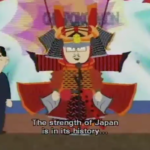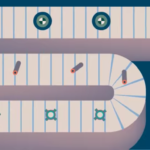The (Re)Materialisation of Money in Iran
Ferdowsi Avenue runs like a vein through the centre of Tehran, pulsating with street-side money exchangers who sit perched next to their propped open briefcases bearing neatly displayed rial paper notes which they hope to exchange for dollars. It is the heart of currency exchange trade in the city, and uncoincidentally, Bank Melli, which houses the state treasury, sits adjacent to this hustle and bustle, though in comparative stony silence. In the depths of the treasury’s vaults lie Iran’s exquisite national jewels; an accumulation of centuries of Persian dynastic wealth and prestige. I argue that the objects in these two (monetary) worlds reveal, at face value, intriguing paradoxes concerning value in relation to materiality and immateriality; dispensability and indispensability; the mutable and immutable.
Linked to the treasury, my object(s) of choice from the Ashmolean museum money collection are the ‘heavy gold coins of Iran’, which were minted in Tehran and Isfahan between 1780 and 1820. They were objects specifically “coined” to efficiently save and store wealth. In other words, the components of their materiality – ‘the metallic substance itself’, as well as the intricate and unique designs/symbolism engraved on their surface (Walker 2017:295) – was cited as an adequate translation of their commodity value. I place these coins in a similar “category of value” as the jewels currently adorning Iran’s treasury; possessing an explicit commodity/exchange value in terms of its immutable and indispensable material worth.
In juxtaposition to this, Walker examines the value of paper money in the Democratic Republic of Congo. In and of itself, paper is a fantastically fragile, dispensable and non-precious material; all of which manifested in Congolese wariness towards its introduction as formal currency in 1896 (Walker 2017). Yet, as has long been philosophically discussed, the immutable value of paper money lies not in its intrinsic physical substance, but in its “fetishistic disavowal”: ‘its ability to timelessly embody value even as its physical body becomes increasingly corroded’ (Walker 2017:296). This imbued immaterial value in money pertains to faith in the ‘authority figure backing the coinage’ – the nation state (Ibid.:291). In present-day Congo, it is precisely a lack of faith in the state, Walker argues, that has lead to an erosion of the ‘immutable substance of money’ – and in its place, given rise to an alternative, ‘creative’ fetishism of the materiality of the banknotes themselves (Ibid.:296). In this way, a new value has been given to paper money in terms of its “well kept-ness”, with diminished face value attributed to the ‘worn or torn’. This is not simply a matter of the national currency alone; it has also been applied – indeed with greater “fetishistic fervour” (as it were) – to the US dollar, adopted as a second currency in the 1990s. In this instance, Walker highlights that even a tear in the dollar note as tiny as a ‘millimeter or two’ can decrease its value (Ibid.:289). The greater sensitivity towards the treatment of dollar notes corresponds with an increased confidence in the authority backing that currency, the US state, which sits in paradox to the internal ‘crisis of confidence’ regarding the Congolese state and the instability of the Congolese franc. In short, ‘dollarization signified a displacement of state (money) fetishism’ (Ibid.:292.).
In Iran today, a similar ‘crisis of confidence’ is taking place with regards to the plummeting value of the rial in the face of heavy US sanctions on an already mis-managed and vulnerable economy. I argue that in a not too dissimilar way to Congo, fetishizing the Iranian state as money backers is being challenged by an increased fetishization of the dollar (as backed by the US state), and on top of this, a turn towards investing the rial in gold. I refer to this increased consciousness towards the materiality of money as a kind of “re-materialisation”, whether this be in the form of physically “holding on” to dollars (quite literally, stuffing them under the mattress [see Al Jazeera article]), or “solidifying” the rial by turning it into gold. I argue that ‘the relationship between money as an idea and as a physical substance’ couldn’t be more clear-cut nor relevant in this economically volatile context (Ibid.:295).







